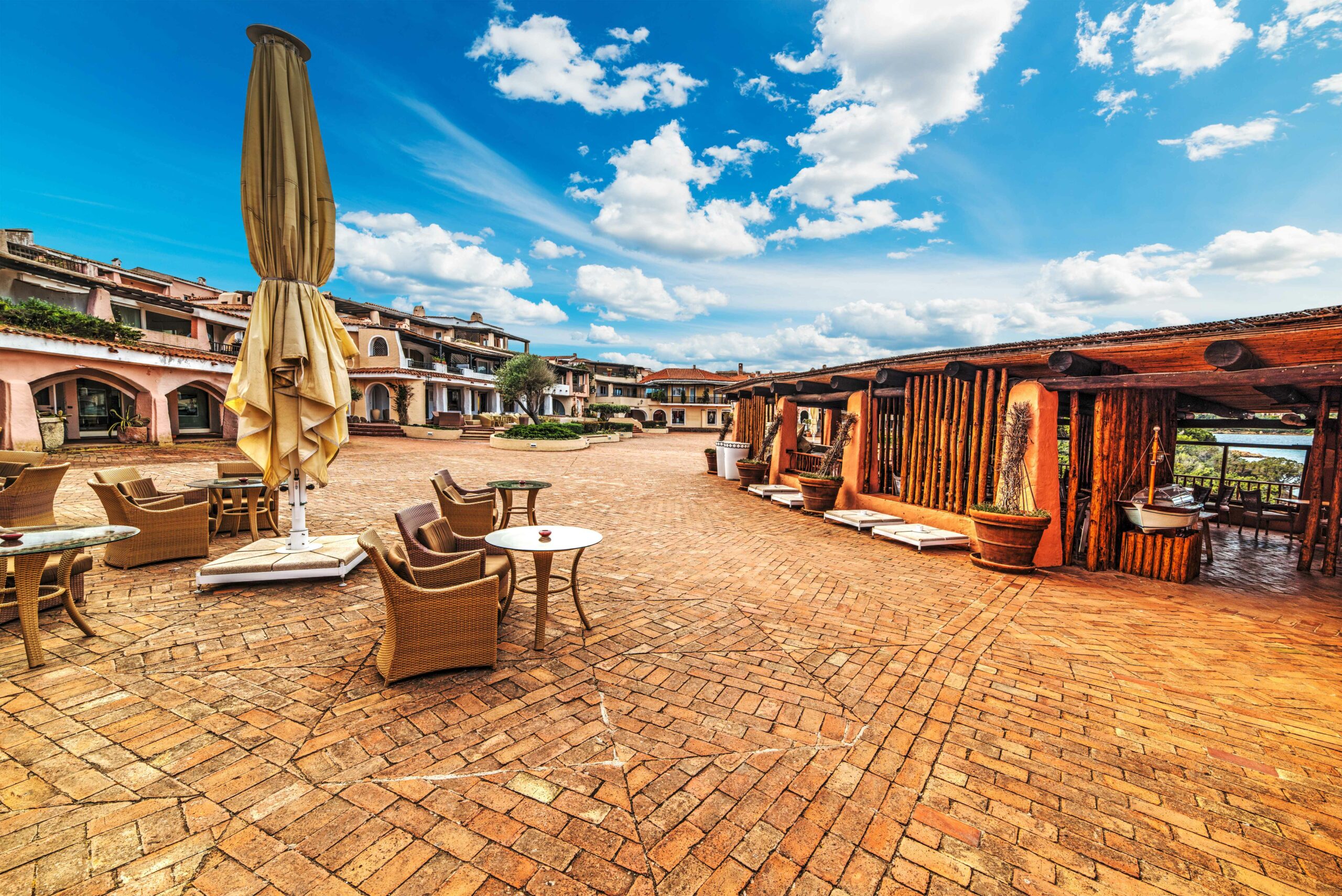
Costa Smeralda
Costa Smeralda is known worldwide for its emerald sea, small squares full of social life, luxury hotels and residences, sparkling nightlife, exclusive boutiques and high quality services. This is the most fashionable location in the north-east of Sardinia, made for relaxation and holidays. As soon as you arrive, you will be greeted by two granite stones bordering the entire area and bearing its name; one in the south, on the road that leads from Olbia to its most famous places, and the other in the north, on the road that leads to the shining blue of Baja Sardinia. The Costa Smeralda, with its consortium founded by the Ismaili prince Karim Aga Khan in 1962, invites you to good food, shopping and a quiet and carefree life in the heart of Porto Cervo, between Golfo Pevero, Pantogia and Capriccioli. Its architecture is characteristic, consisting of small, low, white buildings, with sinuous contours, perfectly embedded in the Mediterranean vegetation. An example is the Stella Maris church designed by Michele Busiri Vici. The fame of the Emerald Coast is linked to some places of inestimable natural value, such as Cala di Volpe, an exclusive natural harbor where some scenes of the movie ‘Agent 007 – The Spy Who Loved Me’ were filmed. Other famous locations include Grande Pevero, Liscia di Vacca, surrounded by Mediterranean scrub and characterized by turquoise water, Liscia Ruja with small coves surrounded by junipers, Romazzino with transparent sea and white beaches and Pitrizza. Beautiful coves, which you will always see lit up by white sailboats, reveal to your eyes beaches and islands such as Isola dei Cappuccini, Isola delle Bisce, south of Caprera, Li Nibani, Mortorio Island, Camere Islet and Soffi Island. On the coast stands the Bottlenose Dolphin Research Institute, an international research center for the study and protection of dolphins. There are various interesting archaeological sites nearby, such as the necropolis of Li Muri (in the Arzachena area), dating from the second half of the 4th millennium BC, the nuragic complexes of Malchittu and Albucciu, which include the nuraghe, the tomb of the giants and the village of huts and the tomb of the giants of Coddu Vecchiu (3rd-2nd millennium BC).






